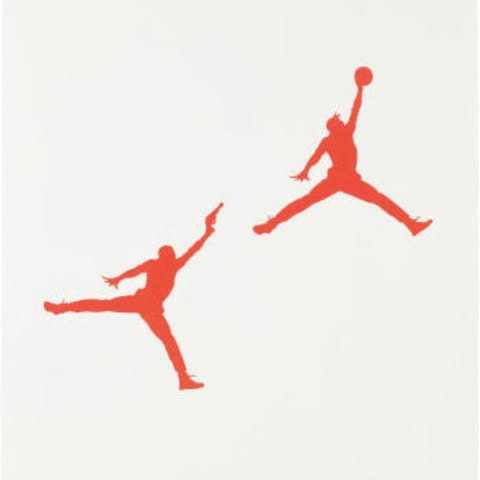Captioned Black Art
Your Curated Art Museum
Get cultured in five minutes or less . . .
“‘I don’t see why she needs to pray. She’s a prayer in herself. She has made me better by letting me love her.’”
— Paul Laurence Dunbar
A Snippet:
Did you know that Paul Laurence Dunbar was somewhat of a business maverick for his time, self-publishing and raising capital in order to print his first book of poems, Oak and Ivy, in 1893 for $125?
Learn more . . .
16. “Picking Cotton” (circa 1969)
“When we used to pick cotton, I picked draggin’ my sack. That’s the way I picked it . . . I picked it draggin’ my sack. And I picked three, I picked three hundred and fifty pounds of cotton a day. That’s what I was pickin’. Three hundred and fifty, draggin’ my sack from eight o’clock in the morning until five o’clock in the evening.”
— Clementine Hunter
Did you know?
Did you know that Clementine Hunter (1886 - 1988) was a self-taught artist and former field hand who became a household name in her home state of Louisiana.
Nicknamed the ‘Black Grandma Moses’ (another self-taught folk artist who took up painting at a late stage in life), Hunter made a significant impact on the art world with her playful paintings.
Born into a Louisiana Creole family at Hidden Hill plantation, one of seven children, Clementine Hunter’s grandparents had been enslaved and her parents worked at the plantation where she was born.
Hunter painted from memory, recreating scenes from her life, such as picking cotton, washing clothes, plantation funerals, and baptisms.
Though Hunter is considered a folk art legend, she lived in poverty for most of her life.
She sometimes made money by charging people 25 cents for a tour of her home and to view her paintings, or $1 for a photo with her, though she frequently gave away paintings as gifts.
17. “Shooting Stars” (2011)
“I think the artist imperative is to try and stay true to themselves, and most of us are not really speaking about today or the past, we’re really speaking about tomorrow, which is why so much art is not understood in the contemporary context.”
— Hank Willis Thomas
Did you know?
Did you know that Hank Willis Thomas (b. 1976) is a conceptual artist working primarily with themes related to perspective, identity, commodity, and popular culture?
Hank Willis Thomas holds a BFA from New York University, New York, NY (1998) and an MA/MFA from the California College of the Arts, San Francisco, CA (2004).
His work has been exhibited throughout the United States and abroad, including: the International Center of Photography, New York; Guggenheim Museum Bilbao, Spain; Musée du quai Branly, Paris; Hong Kong Arts Centre, Hong Kong, and the Witte de With Center for Contemporary Art, Netherlands.
18. “Jitterbugs III” (1941)
“I have now completed it all from my people’s fight—early 1800s to date. Spirituals, poor workers, sharecroppers, city lives, jitterbugs, dancers, war scenes, Red Cross, religious themes, families down South—portraits of all I could paint of history’s Great men, women—fighters for Freedom.”
— William H. Johnson
Did you know?
Did you know that William H. Johnson (1901 – 1970) produced hundreds of works in a virtuosic, eclectic career that spanned several decades as well as several continents?
Working a variety of jobs, Johnson saved enough money to move to New York from South Carolina, and paid for his own art education at the prestigious National Academy of Design, where his talent was well-received by teachers and fellow students alike.
Johnson spent the later part of his 1920s in France, learning modernism, where he met and married Danish artist Holcha Krake in 1930. The newlyweds spent the next few years in Scandinavia, where Johnson’s interest in primitivism and folk art began to develop.
Returning to the U.S. in 1938, Johnson immersed himself in the traditions of Afro-American art.
Although William Johnson and Holcha Krake enjoyed a certain degree of success as artists abroad, financial security remained elusive at home in the U.S.
In fact, by the time of Johnson’s death, in 1970, he had slipped into mild obscurity.
After his death, many of his works were almost lost forever to time, but ultimately rescued by friends and admirers, and now over a thousand paintings by Johnson are part of the collections at the Smithsonian American Art Museum.
Save the best dance for last
(Breathe In . . . Breathe Out)
Jitterbugs and Lindy Hoppers
A STEM Grew Petals Newsletter
Next issue is next Thursday:
11am (Pacific), 2pm (Eastern)
Want Daily Quotes?
Follow on Instagram (at Captioned Black Art)
Made in Silicon Valley (with love) by author Jafari Joseph.
Copyright (C) 2025 My STEM Grew Petals Publishing. All rights reserved.
STEM Grew Petals is a reader-supported publication. To receive new posts and support my work, consider becoming a free or paid subscriber.










